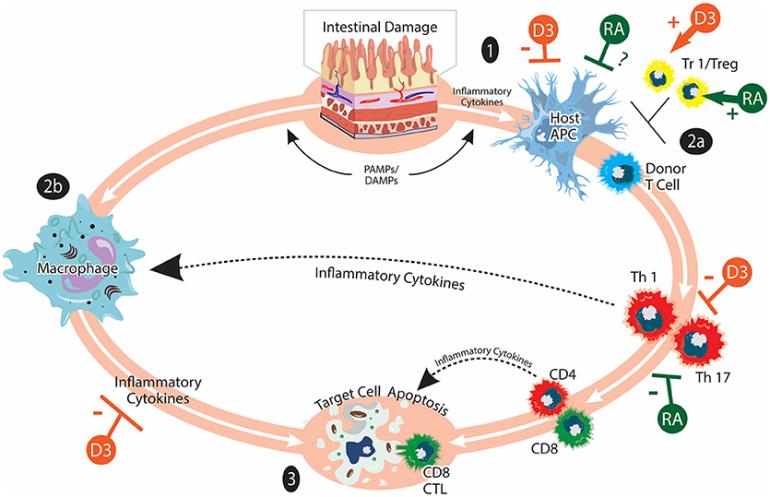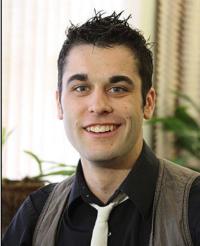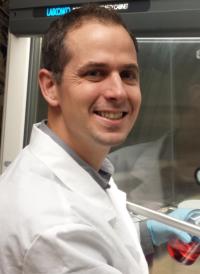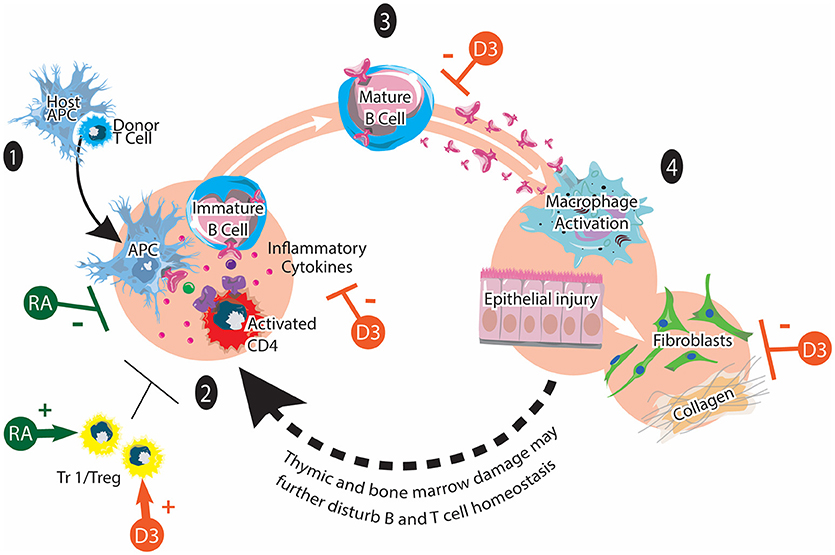
A tragedy just as he was finishing his degree in graphic design at Viterbo University helped inspire Derek Fuchsberger to go back to school, enrolling in the School of Nursing. That background in design has served him well in his studies, including creation of medical illustrations that one instructor described as the best he’d ever seen.
When Fuchsberger first started at Viterbo, he was trying to decide between three majors: graphic design, psychology, and nursing.
“My dad wanted me to be a teacher, my sister wanted me to be a pediatric nurse, and my mom wanted me to be a pediatric oncology nurse,” explained Fuchsberger, a Colorado native. “However, being a new college student and athlete juggling classes, social life, and soccer, I ultimately decided on graphic design.”
Four years later, during his final class for his degree and with finals looming, Fuchsberger received a phone call from his mom saying that my dad had an aneurysm.
“At first, she told me to stay at school and focus on finals, but then changed her mind and asked me to come home,” he said. “We stayed at the hospital until late that night. The next day, exactly a week before graduation, near the end of a long day, my dad had no neurologic activity and was pronounced dead.”
Throughout the experience at the hospital, what impressed Fuchsberger was the interaction with nurses and doctors. “I remember thinking how inspirational they were, and how much I would rather be on the other end of the scenario: taking care of and comforting people instead of needing to be comforted. I was very impressed with how well they handled the whole situation,” he said.
Fuchsberger came back for finals and took them all within 24 hours, and he was grateful for the support from his college. “My whole family was immensely impressed with how well Viterbo stuck behind us and supported us in this difficult time. The news of my father’s death spread very fast, and we received overwhelming support,” he said. “We even had a faculty member and a couple of her fellow Franciscan sisters drive two and a half hours to make it to the funeral.”
Less than a month after graduation, he got a great graphic design job, but he was not satisfied with the work. After a talk with a physician’s assistant, who told him he should give the medical profession a try, he was back at Viterbo for another round, this time to study nursing.
“Since starting the journey to nursing at Viterbo, I have been constantly reminded that I made the right decision. From getting top grades to experiences with patients at my job as a certified nursing assistant at Mayo, I feel like I am in the place where I am meant to be,” Fuchsberger said. “Having the opportunity to explore my calling and make a difference has meant the whole world to me.”
One of the connections Fuchsberger made was my anatomy and physiology professor, Chris Mayne, for whom he served as supplemental instruction tutor for anatomy and physiology. Mayne also recruited Fuchsberger to create illustrations for a research review article for a medical journal he was co-authoring.
“This was really exciting, because I was able to use both of my degrees at once to enhance my design,” Fuchsberger said. “It was like the culmination of the last eight years of my life. After countless hours and many revisions, Chris told me it was the best artwork he had seen in a medical journal article. It was beyond exciting to see the finished product on the internet. It was such an honor to be a part of this and I hope there are many more opportunities like it in the future."
Mayne’s article in Frontiers in Immunology examined the role of vitamins A and D in graft-versus-host disease (GVHD). “Derek has, without exaggeration, created the best figures I have seen representing the pathogenesis of GVHD in the entire field,” Mayne said.



